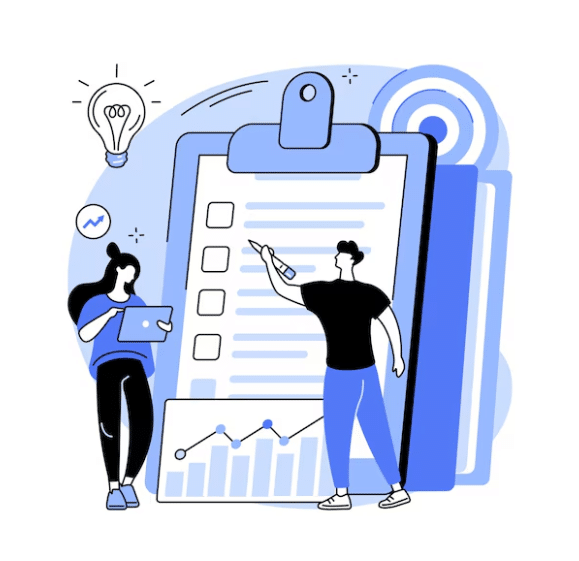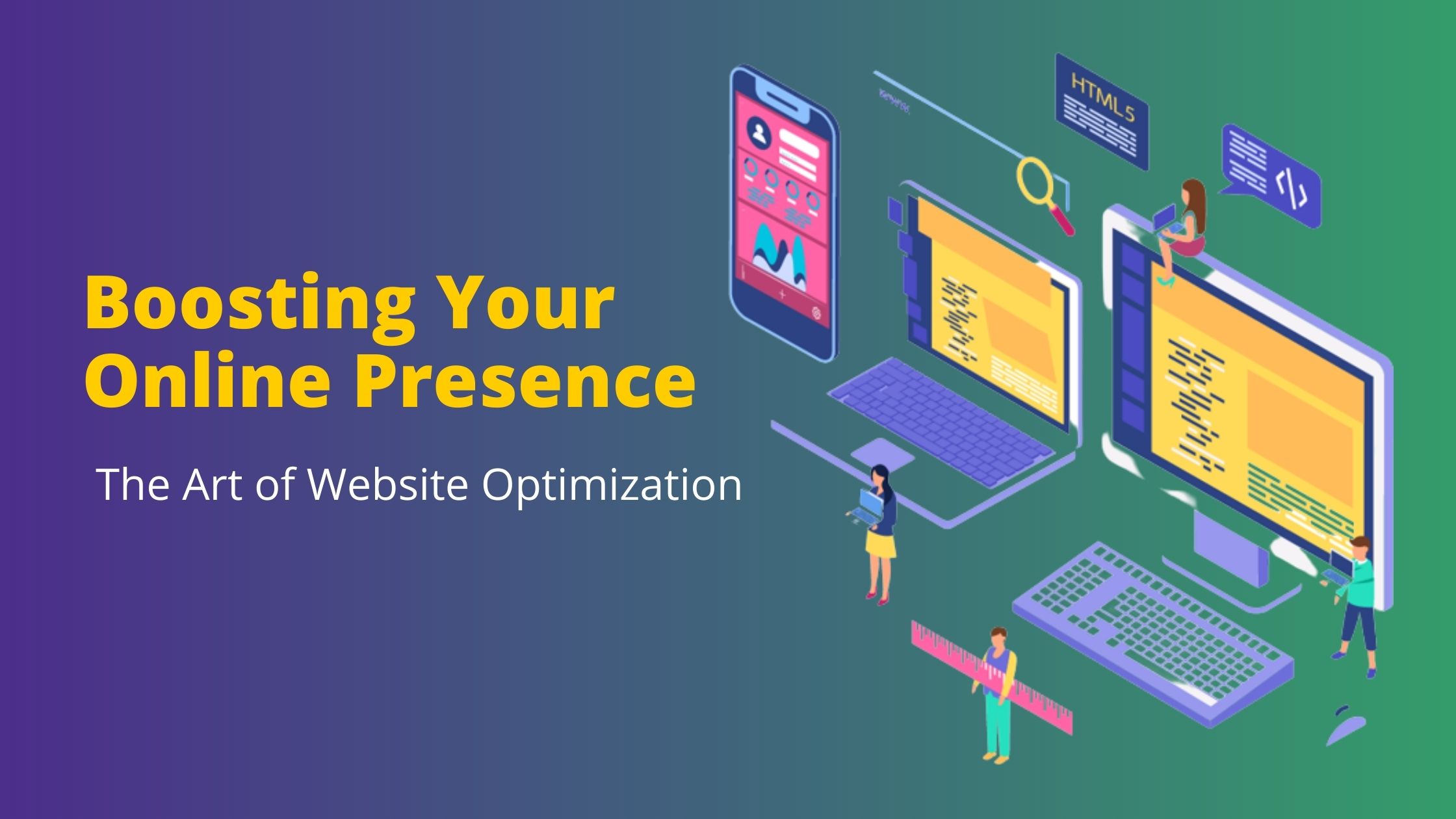In today’s digital age, having a website is essential for any business to succeed. However, simply having a website is not enough. Your website needs to be optimized to ensure that it is user-friendly, easily searchable, and attracts visitors. A website optimization checklist can help you ensure that your website is running at its best.
Why do you need a website optimization checklist?
A website optimization checklist is an essential tool for ensuring that your website is running at its best. It helps to identify any areas of your website that need improvement and provides actionable steps to optimize them.
Here are some key reasons why you need a website optimization checklist:
- Improve User Experience:
A well-optimized website will provide a better user experience, which will keep visitors on your site for longer and increase the chances of them converting.
- Increase Conversions:
An optimized website can lead to higher conversion rates, as it makes it easier for visitors to find what they are looking for and take action.
- Boost Search Engine Rankings:
A website that is optimized for search engines will rank higher in search results, leading to increased traffic and visibility.
- Reduce Bounce Rate:
A website that is slow or difficult to use can lead to a high bounce rate, meaning that visitors leave your site quickly. An optimized website can reduce bounce rate and keep visitors engaged.
- Stay Ahead of Competitors:
By optimizing your website, you can stay ahead of your competitors and provide a better online experience for your customers.

Here is a detailed website optimization checklist:
1. Website Speed Optimization:
- Minimize HTTP requests
- Enable compression
- Minify CSS, JavaScript, and HTML
- Optimize images
- Use a content delivery network (CDN)
- Reduce server response time
- Enable browser caching
2. Mobile Optimization:
- Use a responsive design
- Optimize images for mobile devices
- Use a mobile-friendly font size and style
- Make sure buttons are large and easy to tap
- Ensure that all content is accessible on mobile devices
3. Search Engine Optimization:
- Use descriptive page titles and meta descriptions
- Use header tags (H1, H2, H3) to structure content
- Include relevant keywords in content and meta tags
- Optimize images with alt tags
- Build internal and external links
- Ensure that your website is mobile-friendly
4. User Experience Optimization:
- Use clear and easy-to-read fonts
- Make sure that your website is easy to navigate
- Use white space effectively
- Ensure that your website is accessible for users with disabilities
- Make sure that all links and buttons are working properly
- Use clear and concise language
5. Security Optimization:
- Use HTTPS protocol
- Keep software up-to-date
- Use strong passwords
- Regularly backup data
- Use a security plugin or service
By following this website optimization checklist, you can ensure that your website is running at its best and providing a great user experience for your visitors.
How to optimize a website at different stages?
Optimizing a website involves several stages, each with its unique set of tasks and goals. Here are some tips on how to optimize a website at different stages:
1. Planning Stage:

The planning stage is where you define the goals of your website and create a strategy to achieve them. Here are some things to consider during this stage:
- Define your target audience: Who do you want to reach with your website?
- Set goals: What do you want your website to achieve?
- Identify your competitors: Who are your competitors, and what can you do to stand out?
- Create a content strategy: What type of content will you create, and how will it support your goals?
- Choose the right platform: Which platform will you use to build your website?
2. Design Stage:

The design stage is where you create the look and feel of your website. Here are some things to consider during this stage:
- Create a user-friendly design: Make sure your website is easy to navigate and use.
- Optimize your images: Compress your images to reduce their size and improve load times.
- Use a responsive design: Ensure your website is optimized for all devices and screen sizes.
- Use typography wisely: Choose fonts that are easy to read and appropriate for your content.
3. Development Stage:

The development stage is where you turn your design into a functional website. Here are some things to consider during this stage:
- Optimize your code: Minimize your code to reduce load times.
- Use meta tags: Add meta tags to improve search engine visibility.
- Use analytics: Install analytics software to track website performance.
- Test your website: Ensure your website works correctly and is free from bugs.
4. Launch Stage:

The launch stage is where you make your website live. Here are some things to consider during this stage:
- Set up hosting: Choose a reliable hosting provider and configure your website.
- Set up security: Install SSL certificates to encrypt data and protect your website from hackers.
- Submit your sitemap: Submit your sitemap to search engines to improve visibility.
- Promote your website: Use social media and other marketing channels to promote your website.
5. Maintenance Stage:

The maintenance stage is where you keep your website running smoothly. Here are some things to consider during this stage:
- Update your content: Keep your website up-to-date with fresh content.
- Monitor your analytics: Monitor website performance and make adjustments as needed.
- Backup your website: Regularly backup your website to prevent data loss.
- Secure your website: Keep your website secure by installing updates and patches regularly.
In summary, optimizing a website involves several stages, each with its unique set of tasks and goals. By following the tips outlined above, you can optimize your website at every stage and achieve your goals.
Revolutionize Your Online Presence with Ambest Brandcom
At Ambest Brandcom, we specialize in providing comprehensive website design and development services in Mumbai that will elevate your online presence and drive tangible results for your business. Whether you’re looking to optimize your existing website for better search engine rankings, create a visually stunning and user-friendly design, or develop a brand-new website from scratch, our team of experts is here to help.
In today’s digital landscape, a well-optimized website is crucial for attracting and engaging your target audience. With our proven strategies and cutting-edge techniques, we will ensure that your website stands out from the competition and captures the attention of your potential customers.
Our talented team of designers and developers will work closely with you to understand your unique goals and requirements. We combine creativity, functionality, and technical expertise to deliver a website that not only looks impressive but also delivers a seamless user experience across all devices.
Don’t settle for a mediocre online presence. Partner with Ambest Brandcom, a leading website design and development company in Mumbai and let us take your website to new heights. Contact us today to discuss your project and discover how our website optimization, design, and development services can transform your business.
